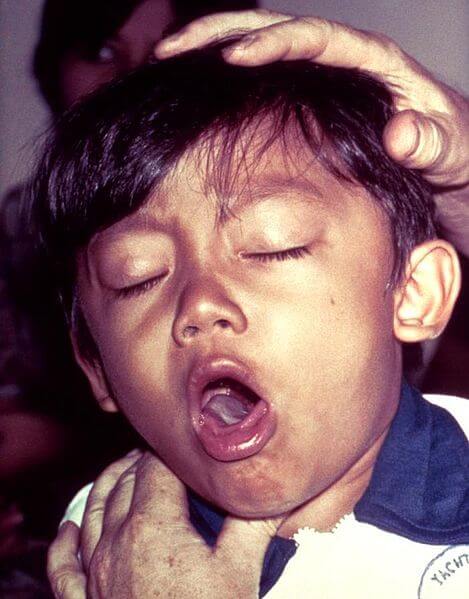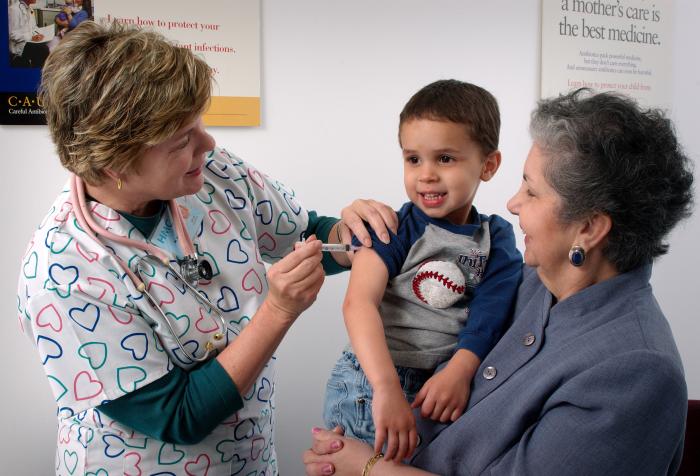Whooping cough has affected many of those who live in ultra-Orthodox areas in the United States. What is the disease, what is its treatment and why is it very important to get vaccinated?

Dror Bar-Nir Galileo
In mid-January 2012, an epidemic of whooping cough broke out in the areas where the ultra-Orthodox of New Jersey and New York live - Lakewood, Borough Park, and Williamsburg, in the eastern United States. At least one baby died from the disease and two more, one six weeks old and the other eight months old, were hospitalized in critical condition in the respiratory intensive care unit.
The babies who were severely affected - and those who were more mildly ill - were not vaccinated, even though the vaccine against the main cause of the disease, the bacterium Bordetella pertussis, is available to everyone (about five percent of outbreaks are caused by another bacterium of the same type - Bordetella parapertussis). Although it is a children's disease, adults can also get it, but in a milder way.
What is whooping cough?
The French physician and epidemiologist Guillaume de Baillou first described the disease in 1578. The bacterium, which is the main cause of the disease, was discovered in 1906 by the French researchers Jules Bordet (Bordet - the type of bacteria is named after him) and Octave Gengou ), who even developed the special substrate, containing potato extract and rabbit or human blood, which allows the bacteria to be grown in culture (the bacteria cannot be grown in "normal" substrates). The platform is named after them today.
Whooping cough, named in English by Thomas Sydenham (Sydenham) Pertussis (in 1669; from violent cough) or Whooping cough (whooping cough), is a disease of the respiratory tract and exists only in humans. The first symptoms of the disease are similar to those of a cold or the flu: a runny nose, a rise in body temperature, loss of appetite and sneezing.
Later, dry, characteristic coughs appear with high frequency, which gets stronger at night (in children, the coughs are accompanied by a kind of wheezing or whistling - whoops - hence the English name of the disease). Over time, vomiting also joins in, and the coughs increase and turn into acute coughing attacks that can reach about 40 times a day. The attacks make it difficult to eat and breathe (breathing is sometimes stopped for a few seconds).
The recovery is prolonged, and can reach three months or more, during which the coughing attacks continue, which is why in China the disease is called "the 100-day cough". Complications can be manifested, among other things, in pneumonia, ear infection, lack of oxygen and brain damage. The disease can be fatal in babies under the age of one, usually as a result of pneumonia.
The disease is highly contagious, and the bacteria that cause it pass through the droplets secreted from the respiratory system of the patients or by contact with objects sprayed with these droplets. The mechanism by which the bacteria cause the characteristic cough is not known, because most of the research is done in rats, which lack the ability to cough, and in which the disease manifests itself in inflammation of the upper respiratory tract that develops into pneumonia - but it is possible to investigate with their help the ways of infection and distribution of the bacteria and the effectiveness of vaccines.
Whooping cough is a highly contagious disease. Illustration: ingimage
What is the treatment of the disease?
The treatment of patients is supportive and tries to reduce the intensity of the symptoms. Two weeks of antibiotic treatment, given at the same time, does not affect the course of the disease, but it kills the bacteria and thus stops the chain of infection. The continued development of the disease, even without the bacteria, indicates that the bacteria damage, through the toxin they secreted and penetrated the host cells, certain components of the target cells and the immune system which take a long time to recover.
The best way to deal with the disease is vaccination. In 1947, all children began to be vaccinated in the United States. The initial component included killed pertussis bacteria (cellular component) and later it was combined with the triple component DPT, which also includes the components against tetanus and diphtheria, which is included in the vaccination routine for children. Later it turned the triple component into a pentacomponent, which also includes components against Haemophilus influenzae, the cause of meningitis, and against the polio virus, the cause of polio.
In 1974, side effects caused by the compound caused Japan and other countries to raise the age of starting the pertussis vaccine to two years. A severe pertussis epidemic that broke out in Japan following the rejection of the vaccine was the catalyst for the development of a component based on the toxin of the bacterium (toxoid - instead of the whole bacterium), which entered the various components instead of the cellular vaccine. Since 1981 it is also used in Israel.
The vaccination routine in Israel includes the five components at the ages of two months, four months, six months and one year; At the age of eight, a quadruple vaccine is given (without H. influenzae) and at the age of 13, the triple vaccine is given. Before the age of vaccines, there was a whooping cough epidemic every 3-7 years. The difference in times between the epidemics is due to the fact that after such an epidemic all those who recover remain immune from further infection, and enough newborns and children who have not yet fallen ill need to be added to allow another epidemic to occur.

Wherever the vaccination routine covers most children, the disease is almost non-existent. Here and there there are isolated cases that result from the infection of an unvaccinated child - or the vaccine did not work on him - by a carrier or a sick adult (whose symptoms are milder, and usually not diagnosed as pertussis) who usually came from outside. In pockets of the population that do not get vaccinated - for religious, vegan reasons, or from principled opposition to government institutions, as in the case described at the beginning of the article, such a single case turns into an epidemic, the results of which in newborns and babies can be fatal.
The conclusion: it is important to get vaccinated.
The full article was published in Galileo magazine, March 2012

6 תגובות
In this case the ultra-orthodox have an anti-vaccination ideology that hurts themselves.
My uncle N.
To my father b. As you know, there is an agenda regarding the ultra-Orthodox (guilty of everything).
From the table you brought it turns out that there is indeed a *widespread* pertussis outbreak in the entire United States, not just Wisconsin and New York (if I remember, according to the table you brought, there are many other states in the United States where there is a pertussis outbreak).
The most convenient (for the purpose of numerical analysis) is to look at the last two columns (on the right) in the table you brought (accumulation series of patients in the last two years 2011 and 2012).
And another thing, this article jumps to conclusions that are not so clear
In the Netherlands there was also an outbreak in 1996 and according to the research of the Dutch Ministry of Health the vaccinated were more sick
http://www.ncbi.nlm.nih.gov/pmc/articles/PMC2640897/pdf/10905967.pdf
There is probably another reason for these outbreaks.
Dhilak, will you try to bring up the Haredim issue here as well?
According to the CDC, the biggest outbreak is in Wisconsin, not in New York and New Jersey
Here are the statistics for March
http://wonder.cdc.gov/mmwr/mmwr_reps.asp?mmwr_year=2012&mmwr_week=12&mmwr_table=2G
no way!
My child got a cough the day after he was born in a hospital!
According to this very representative sample of one person who got sick I am starting an anti-immune movement!
- Yes, that's a good idea...